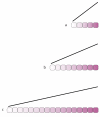Do the protocadherins Fat and Dachsous link up to determine both planar cell polarity and the dimensions of organs?
- PMID: 19043429
- PMCID: PMC2747020
- DOI: 10.1038/ncb1208-1379
Do the protocadherins Fat and Dachsous link up to determine both planar cell polarity and the dimensions of organs?
Abstract
Most, perhaps all cells in epithelial sheets are polarized in the plane of the sheet. This type of polarity, referred to as planar cell polarity (PCP), can be expressed in the orientation of cilia and stereocilia, in oriented outgrowths such as hairs, in the plane of cell division, in directed cell movement and possibly in the orientation of axon extension. Another popular area in current research is growth: there is an attempt to find systems that fix the shape and size of organs. Although both polarity and growth are subject to overall control by morphogen gradients, the mechanisms of this control are almost completely unknown. Here we discuss recent evidence for a 'steepness hypothesis' that links these two apparently disconnected features of animal development.
Figures




References
Publication types
MeSH terms
Substances
Grants and funding
LinkOut - more resources
Full Text Sources
Molecular Biology Databases

